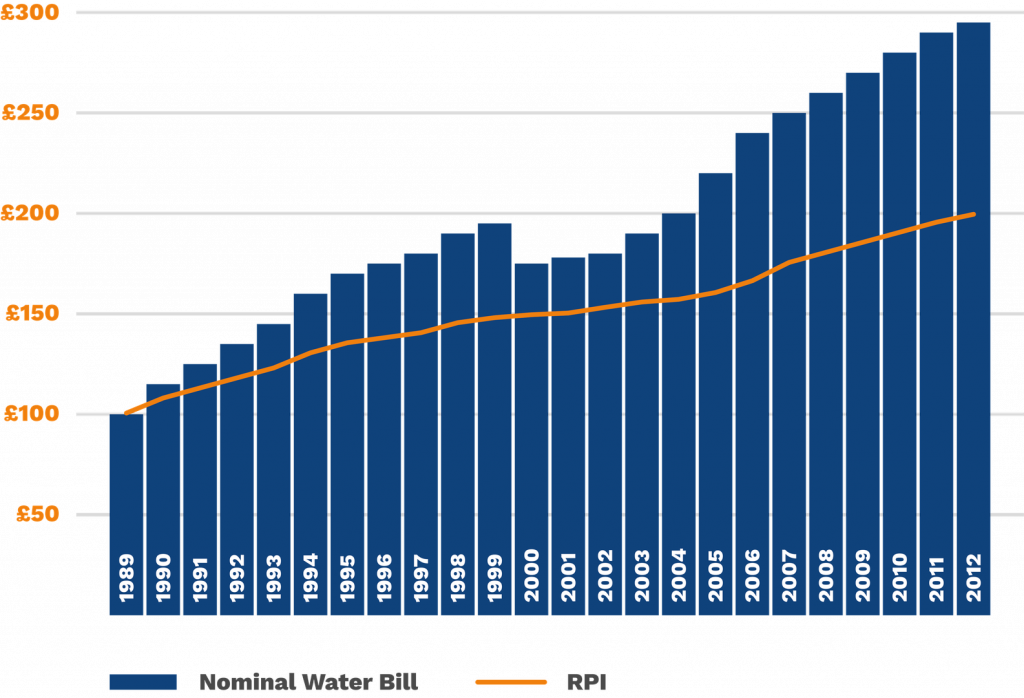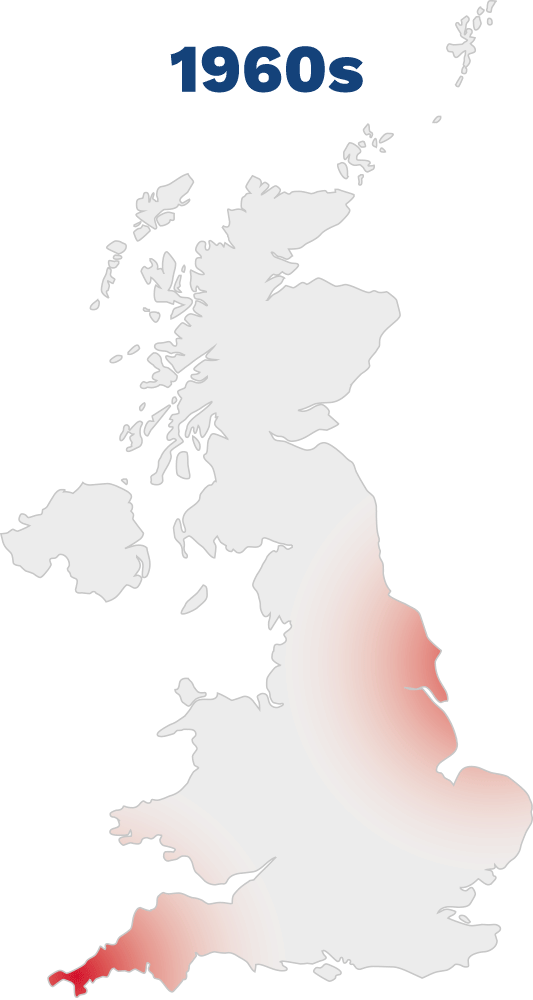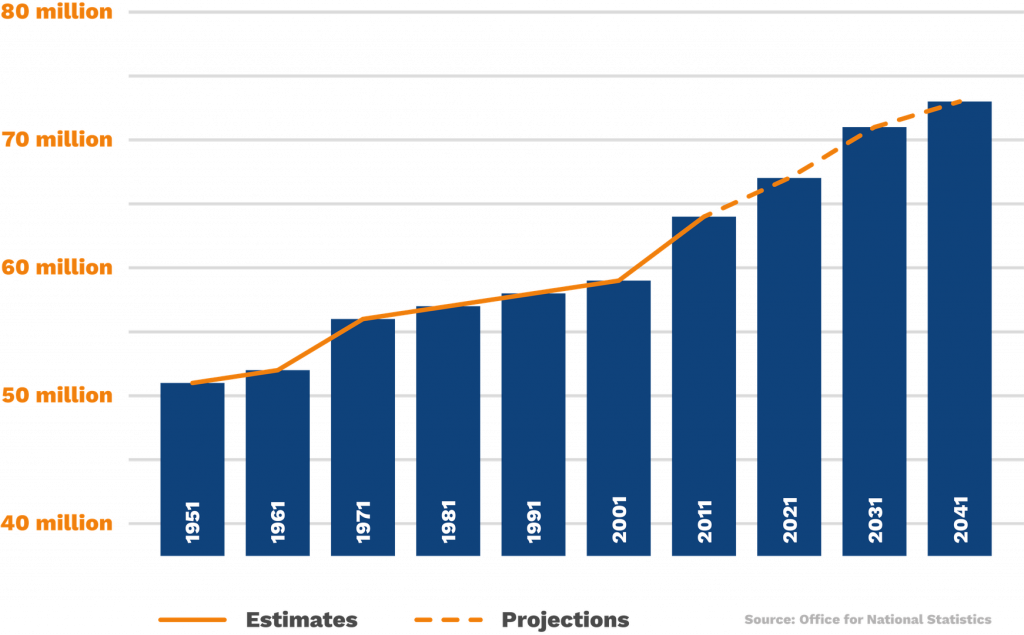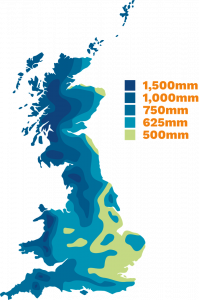Rainwater Harvesting - Everything You Need to Know
Harvesting rainwater can seem like a bit of absurd concept in the UK. It rains at least half the year, and it’s not like we experience the Australian outback style summer droughts.
But if you’re concerned about the rising cost of water bills, or you just want to feed your garden with fresh water during a hosepipe ban, a rainwater harvesting system can be an effective tool to have at your disposal.
In this guide, we will cover:
- How rainwater harvesting works
- The benefits of rainwater harvesting
- The different rainwater harvesting methods
What is rainwater harvesting?
Rainwater harvesting is the practice of collecting rainwater from surfaces such as roofs, gardens and flooded areas before storing and filtering the water to make it suitable for human consumption or utilisation. There are a whole variety of uses for collected rainwater, but the primary applications include watering the garden, integration with irrigation systems, indoor heating systems and drinking water.
Why is rainwater harvesting important?
There are some excellent reasons to install a rainwater system, even here in the UK.
Rising Cost of Water Bills
Earlier this year the government’s water regulator approved a 2% price rise on water, which could add as much as £395 to your annual bill. With a free source of water falling from the sky, a rainwater harvesting system could save you thousands of pounds in the coming years.
As you can see in the graphic below, the cost of water has risen 64% in the last decade.
Heatwaves
If you’re a dedicated gardener, or you just enjoy having a fine green lawn, droughts and the resulting hosepipe ban can play havoc on the health of your garden. A system that allows you to continue feeding freshwater to your garden is one of the most common reasons for investing in rainwater harvesting.
As you can see in the graphic below, the number of heatwaves observed in the UK each decade is steadily rising.
Population Growth
Additionally, the UK's population is growing rapidly and fresh water is essential to life. The sheer immense pressure that will be put on an already short supply will only increase, and if you take pleasure in gardening or simply enjoy a long, refreshing shower, then rainwater harvesting may be a cost-effective and environmentally friendly system to have in place.
As you can see in the graphic below, the population of the UK is predicted to continue multiplying.
What are the benefits of rainwater harvesting?
Aside from having a personal source of freshwater, what are the benefits of a rainwater harvesting system?
Avoid the Hosepipe Ban
Another summer, another hosepipe ban. After working hard all spring to get your garden blooming, you don’t want to let all your hard work go to waste with a hosepipe ban. Stored rainwater can be the perfect solution to stop you falling foul of summer water bans.
Rainwater Harvesting is Cost Effective
The system requires only a minimal cost to maintain, and once you have it set up correctly, the only thing you need to consider is the considerable reduction in water bills.
Rainwater is Considered Safer than Water from Domestic Mains
Not only has water been stored in open dams for long periods, but the water delivered through your mains is treated with a variety of chemicals to eliminate nasty bacteria.
Saving the Environment One Drop at a Time
Rainwater harvesting not only reduces your bills but can also reduce the environmental damage caused by having water pumped into your home.
Rainwater Harvesting Systems Can Help Tackle Flooding
During heavy rainfall, storm drains can sometimes struggle to cope with the quantity of water trying to escape. Rainwater harvesting systems can help to ease that burden and reduce the damage that flooding can cause to your property.
What are the uses of rainwater harvesting?
Essentially, you have three overall uses for harvested rainwater. These include:
Irrigation
- Using water to care for a garden, keeping the lawn watered during a heatwave or helping to grow crops
Indoor Non-Potable Use
- Non-potable means water that is not safe to drink. In this case, the harvested water can be used for things like flushing the toilet
Whole House Potable Use
- In this system, the water has been filtered and can be used as drinking water. Uses include showering, washing dishes and washing clothes
More specific uses of harvested rainwater include:
- Feeding a daily/weekly sprinkler system
- Washing a car
- Watering your garden
- Freshwater for ponds or garden fountains
- Water for flushing a toilet
- Water for washing clothes
Rainwater harvesting buzzwords
Before looking at the different rainwater harvesting methods, it’s important to learn the different buzzwords you’ll find used to describe the various components of a rainwater harvesting system. At its most simple and complex, all rainwater harvesting systems will be made up of the same necessary components.
Catchment Area
A catchment area, as you might expect from the name, is an area that is typically designed or altered to collect rainwater. This area will usually be the roof of your home as the system can be adapted to collect rainwater from your home’s drainage system. In more complex systems, you can also collect water from gardens and flooded areas.
Conveyance System
This is just a fancy term used to cover the eavestroughs, downspouts and piping that will be put in place to deliver water from the catchment area to the storage system.
Storage System
Again, as you might expect from the name, the storage system is simply a barrel, cistern or a tank that can hold rainwater for future use.
Distribution System
After you’ve collected the water in your storage system, you will need to get the water from its storage place to where it is being used. The manual labour method can be a good start for small gardens, but if you want the water to be fully integrated with your home, then you will need to invest in a pump that can be fully installed to run in harmony with your existing plumbing system.
What are the different methods to collect rainwater?
Butt System
A standard plastic water butt or storage tank is usually sufficient to store a large volume of water for use in watering nearby plants. In this system, you will usually need a garden pump to help shift the water around the garden. Watering cans can also help, but it's often backbreaking work.
Pros
- Easy to set up and maintain
- Water butts are relatively cheap compared to alternatives
Cons
- Limited capacity
- Challenging to shift water without a pump
Tank System
Sometimes referred to as a “dry” system, the tank system is essentially a larger variation of the water butt system but with a variety of drain pipes leading directly to the top of the tank.
Pros
- Large capacity to collect rainwater
- Relatively easy to set up compared to a wet system
- A lot cheaper than the wet system, but still relatively more expensive than the butt system
Cons
- A large storage tank must be located within the vicinity of your home
Wet System
A wet system is a little different from your regular rainwater harvesting systems. In this system, you will usually have a variety of pipes set to deliver water to an underground tank.
The rainwater will fill the underwater pipes, rise and then spill into the underground tank. This allows you to collect from the entire catchment area of your property.
Pros
- Collect from multiple downpipes
- Collect from a much larger catchment area
Cons
- Expensive to set up
- Time intensive to maintain
How much water can be collected?
The amount of water you can collect will differ depending on the average rainfall in your region and the square feet of your catchment area. Theoretically, if you have a catchment area of 100 square feet and receive around 800mm of rainfall annually, then you can collect up to 25,000 litres per year.
The calculation looks like this:
Square Feet of Property
divided by (÷)
3.2
times by (x mm of rainfall)
Annual Rainfall
You can use this Met office precipitation map to calculate a rough estimate of your annual rainfall.
If you’d like a more precise figure, make sure you deduct about 20% of your overall total to account for water that is lost to overflow, evaporation and leaks.
What rainwater harvesting system do I need?
Rainwater harvesting systems can be purchased in all shapes and sizes. When considering what system you need for your home, there are several questions you need to reflect on.
Answer These:
How Do You Plan to Use the Water?
How you intend to use the water will be the biggest factor in which system you decide to purchase. Are you simply looking to utilise harvested water in the garden during the summer, or do you need to fully integrate the system into your home for toilet and showering use? How you plan to use the water will require a different setup and, consequently, come at a different cost.
How Much Water Do You Need?
Similar to the first question, you need to consider how much water you intend to use. A retired couple looking to utilise harvested water in the garden will need a different system to a family of six who intends to integrate the system with their home’s plumbing. Think about your household water habits, the number of people in your house and if the current plumbing fixtures installed in your home are water efficient.
How Much Water Can You Store?
It’s important you estimate how much water you can possibly collect. As mentioned, all rainwater harvesting systems come in different shapes and sizes. Tanks and cisterns can have limited storage capacity. If you purchase a system capacity unsuitable for your region, you will need to install an overflow pipe that leads water away from your home. Excess water flooding from a harvesting system can damage your property and foundations.
Decide on These
After you have answered the four questions above, you can then decide what type of rainwater harvesting system you need for your home. While there are a variety of systems that vary in complexity and size, these can often be covered in three basic models.
Water Butt Systems
The simplest of all rainwater harvesting systems, the water butt is a large plastic container which is connected to one drain pipe. These are great for small scale rainwater harvesting and are often the optimal system for people looking to reduce water consumption from their mains supply when gardening.
The benefit of this system is that you can install the water butt yourself and get harvesting at minimal cost. Remember, if you are purchasing a water butt system, you need to calculate how much rainfall you expect to receive. You may need to install an overflow pipe or purchase a larger container if you live in an area with large amounts of rainfall.
Gravity Feed Systems
The water butt can be a great system to trial rainwater harvesting, but if you want to further reduce your reliance on the mains water supply, then you will want a more complex rainwater harvesting system. The first system to consider is a gravity feed system. These are systems that collect water on the roof of your property when it rains and feed the water directly into the filter system of a tank.
The benefit of this system is that you can harvest large amounts of water directly into your home. This avoids the costs and complexity of integrating with a power source to pump the water around your home. The downsides of this system are that you may lose a large percentage of your harvest potential by only collecting at roof height and you will need to hire a professional fitter to ensure your system is safe and stable.
Pump Feed Systems
If you want to make a professional job out of your rainwater harvesting system, then you will require a pump feed system. With the tank at ground level, or even under the ground, you can maximise the amount of water you harvest before using a pump system to move the water around your home.
The benefit of this system is that the pumps, like the KSB Hya-Rain, can clean and filter the water for you, ensuring that you are receiving a clean source of water. These systems also maximise your harvest potential by connecting to large underground tanks. The only potential downside to this system is the initial set up cost, but once you have the initial cost covered, you will recoup the costs when paying reduced water bills.
Free Advice
If you’re struggling for advice, ring our dedicated pump experts for free advice on 0800 112 3134 or 0333 577 3134.
We’re open Monday to Friday 07:00 - 17:30 and Saturday 08:30 - 12:30.





